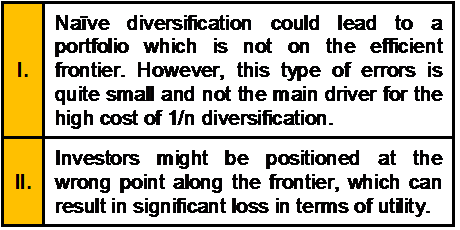Section A (1 Mark)
Which of the following is NOT one of the phases of the life-cycle theory of asset allocation?
A. Accumulation phase
B. Consolidation phase
C. Taxation phase
D. Gifting phase
Section B (2 Mark)
Lokesh purchased a flat on 1-4-1996 for Rs. 10,00,000/-. He sells the same flat on 1-10-
2006 for Rs. 25,00,000/-.As a CWM® calculate the Indexed Cost of Acquisition on which
capital gain would be calculated. (The CII of year 1995-96 is 281, for year 1996-97 is 305,
for year 2005-06 is 497 and for year 2006-07 is 519).
A. 17,01,639
B. 18,46,975
C. 17,68,683
D. 16,29,508
Section C (4 Mark)
Yogesh Jain is a Chartered Accountant by profession and a very disciplined investor he
has started investing from today in an account Rs. 1,00,000 every year (beginning of year)
and plans to increase his contribution by 10% every year. If the ROI he gets is 15% per
annum compounded half yearly calculate the corpus he would be able to accumulate in 25
years.
A. 47379847
B. 52117831
C. 48763660
D. 44330600
Section A (1 Mark)
Customer service facilitation includes EXCEPT:
A. Divert attention of customer
B. Resolve problem
C. Improve efficiency
D. Provide full information
Section A (1 Mark)
_____________ is defined as the transfer of services to private enterprise in US.
A. Capital Spending
B. Attrition
C. Privatization
D. Decrements
Section A (1 Mark)
Stock broker’s human capital is _________ to stock market as compared to a school
teacher
A. Less sensitive
B. Sensitive at par
C. More sensitive
D. No correlation
Section A (1 Mark)
Which of the following statements is/are correct with respect to naïve diversification?

A. Only I
B. Only II
C. Both of the above
D. None of the Above
Section A (1 Mark)
The APT is based on the:
A. Law of averages.
B. Law of attraction.
C. Law of accelerating return.
D. Law of one price.
Section C (4 Mark)
Read the senario and answer to the question.
Assume Reena retires at the age of 60 years and invests her salary at 8% p.a.What will be
the future value of Reena’s salary at the time of her retirement if she saves her entire
salary?
A. Rs. 242 lakh
B. Rs. 273 lakh
C. Rs. 514 lakh
D. Rs. 485 lakh
Section B (2 Mark)
The term “permanent establishment” includes especially:

A. I, II and III
B. II and III
C. III and IV
D. All of the Above
Section B (2 Mark)
A client has a minor child she is concerned about what might happen if she was to die
while the child was still young and unable to sensibly handle a sizeable in heritance one
solution could be to draft her will so that the child receives the asset once reaching age 21
this is an example of
A. A discretionary trust
B. A testamentary trust
C. An inter vivo trust
D. A family trust
Section A (1 Mark)
Which of the following statements regarding debit and credit card liability is correct?
A. A credit card carries more risk of loss to the cardholder.
B. A debit card carries more risk of loss to the cardholder.
C. There is no cardholder liability if either type of card is lost.
D. The Government insures losses on credit but not debit cards.
| Page 13 out of 103 Pages |
| Previous |